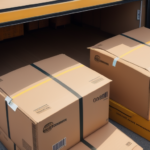Understanding Amazon's Return Policy
As one of the largest online retailers globally, Amazon offers a comprehensive return policy designed to provide customers with flexibility and assurance in their purchases. Understanding the nuances of this policy can help you make informed decisions and streamline the return process.
Basics of Amazon's Return Policy
Most items purchased from Amazon or third-party sellers are eligible for return within 30 days of receipt. To qualify, items should be in their original condition, unused, and with all original packaging and tags intact. Certain categories, such as groceries, select health and personal care items, and hazardous materials, have distinct return guidelines.
Amazon often provides free return shipping for eligible items. If your return qualifies for free shipping, you can print a prepaid return label directly from your orders page. For ineligible items, you may need to cover the return shipping costs. Additionally, Amazon may offer a replacement or refund for damaged or defective items without requiring a return.
Exclusions and Special Cases
Not all products are eligible for return. For instance, digital downloads, personalized items, and certain electronics may have specific return restrictions. It's essential to review the product page or contact the seller for detailed return policies related to your purchase.
How to Request a Return on Amazon
Amazon simplifies the return process, ensuring that customers can return items with minimal hassle.
Step-by-Step Return Process
- Navigate to Your Orders: Log in to your Amazon account and go to the Orders page.
- Select the Item: Identify the product you wish to return and click on the "Return or Replace Items" button.
- Choose Return Reason: Select the reason for your return from the dropdown menu. Accurate selection helps Amazon improve its services and ensures appropriate handling of your return.
- Print Return Label: If eligible, print the prepaid return label provided. Attach it securely to your package.
- Ship the Item: Drop off the package at the designated carrier location.
Third-Party Seller Returns
Items purchased from third-party sellers on Amazon may have different return policies. It's advisable to review the seller's specific return terms on the product page or contact them directly for any clarifications.
Handling Damaged or Defective Items
If you receive a damaged or defective product, Amazon typically offers a replacement or full refund without the need to return the item. Contact Amazon Customer Service to initiate the process.
Managing Return Reasons and Avoiding Account Issues
Providing accurate reasons for returns is crucial not only for a smooth transaction but also for maintaining a positive standing on Amazon.
Importance of Accurate Return Reasons
Selecting the correct return reason helps Amazon identify patterns and address potential issues with products or sellers. It also ensures that your refund or replacement is processed correctly.
Consequences of Excessive Returns
While Amazon's return policy is generous, consistently high return rates may lead to account scrutiny. Amazon monitors return patterns to prevent abuse of the return system. If your account exhibits unusual return activity, Amazon may limit your return privileges or take other corrective actions.
According to a Statista report, maintaining a balanced return rate is essential for long-term customer benefits and seller relationships.
Amazon's Handling of Returned Items and Fraud Prevention
Amazon employs various strategies to manage returned goods and prevent fraudulent activities effectively.
Processing Returned Items
Returned items undergo a thorough inspection process. Depending on their condition, items may be:
- Resold: Items in excellent condition are relisted as new or refurbished.
- Liquidated: Products are sold in bulk to liquidation companies.
- Donated: Certain items are donated to charitable organizations.
- Recycled or Disposed: Items that cannot be resold are disposed of following environmental guidelines.
Preventing Fraudulent Returns
To combat return fraud, Amazon implements measures such as:
- Return Limits: Restricting the number of returns per account within a specific timeframe.
- Item Inspection: Detailed checks to ensure returned items match the purchase conditions.
- Proactive Monitoring: Analyzing return patterns to identify suspicious activities.
Engaging in fraudulent return activities can result in account suspension and potential legal actions. For reference, the Federal Trade Commission outlines the legal implications of return fraud.
Tips to Minimize the Need for Returns
Reducing the likelihood of needing to return items can save time and ensure a more satisfying shopping experience.
Research Before Purchasing
Thoroughly research products by reading descriptions, specifications, and customer reviews. Pay attention to sizing charts, material details, and functionality to ensure the product meets your expectations.
Verify Seller Credentials
When purchasing from third-party sellers, review their ratings, feedback, and return policies. High-rated sellers are more likely to provide accurate product representations and reliable service.
Double-Check Order Details
Ensure that your shipping address, payment information, and product selections are correct before finalizing your purchase. This minimizes errors that could lead to returns.
Avoid Common Return Mistakes
- Not Reading Policies: Always review return policies specific to your purchase.
- Poor Packaging: Properly package items to prevent damage during transit.
- Delayed Returns: Adhere to return deadlines to avoid forfeiting your refund.
Tracking Your Amazon Returns
Staying informed about the status of your return can provide peace of mind and expedite the refund process.
Using the Orders Page
Visit your Orders page and locate the item you're returning. Click on the "Track return status" link to view updates on your return's progress.
Receiving Notifications
Amazon may send email notifications at key stages of the return process, such as when your return is received, inspected, and refunded. Ensure that your contact information is up to date to receive these alerts.
The Future of Amazon's Return Policy
As e-commerce continues to evolve, Amazon adapts its return policies to meet changing consumer needs and market trends.
Potential Policy Enhancements
- Extended Return Windows: Offering longer return periods during holiday seasons or for specific product categories.
- Enhanced Sustainability: Implementing more eco-friendly return processes and packaging solutions.
- Improved Fraud Detection: Utilizing advanced technologies to better identify and prevent return fraud.
Staying Informed
To stay updated on any changes to Amazon's return policies, regularly check the Amazon Return Policy page and review your account settings for any notifications.
Final Thoughts: Making the Most of Amazon's Return Policy
Amazon's return policy offers significant flexibility and protection for consumers, ensuring a trustworthy shopping environment. By understanding and effectively navigating the return process, you can enhance your overall Amazon experience.
Remember to:
- Research products thoroughly before purchasing.
- Accurately select return reasons to aid in policy improvements.
- Maintain a balanced return rate to avoid account issues.
- Stay informed about policy updates and changes.
With these strategies, you can confidently shop on Amazon, knowing that their robust return system is there to support your purchasing decisions.




















